
11 minute read
KLAUSEN. THE ARTISTS’ TOWN
AUTHOR: MARIA GALL PRADER
Klausen/Chiusa is a town well worth a visit. An ode - with insider tips on art, architecture and town life.
Advertisement
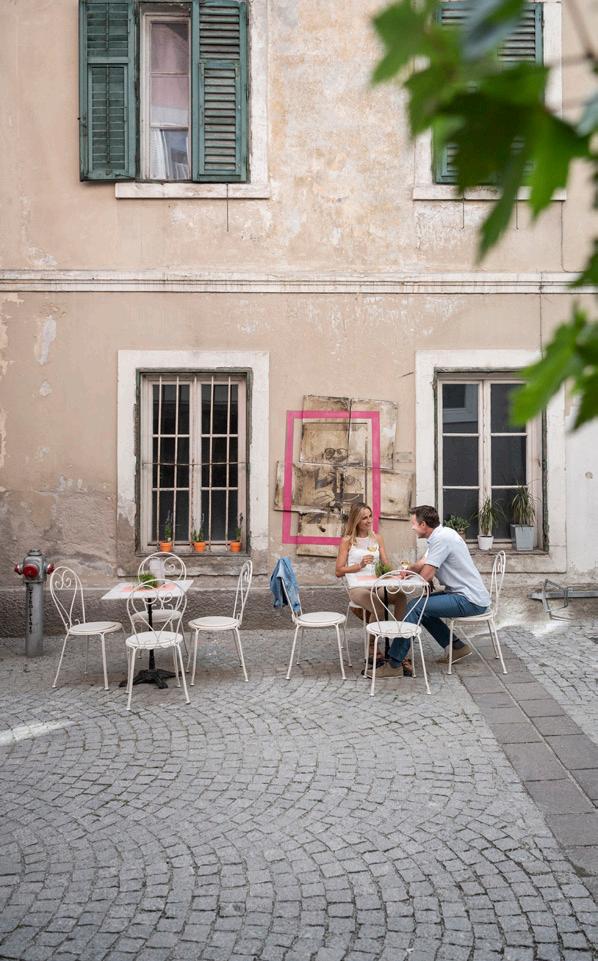
The "Kunst boden_nah" project invites young artists to live and work in Klausen. What they leave behind is a series of artworks in public places, and perhaps a few broadened horizons as well.
Klausen’s fascinating history as an artists’ colony is rich enough to fill an entire book. If a tour guide tried to cover all aspects in detail, they wouldn’t have any time at all to show visitors the old town with its enchanting little corners and sleepy side streets. To discover more about this part of Klausen’s past, let’s first head to the former Lamplsaal hall, which today serves as a council hall and provides a fitting setting for civil wedding ceremonies and other celebrations. In 1874, kind-hearted landlord Georg Kantioler renamed the hall “Walthersaal” in a bid to attract more custom. And despite the unmissable slogan on the wall declaring “Anyone who drinks too much has not drunk well”, artists like Alexander Köster, Franz v. Defregger, Alois Gabl, Mathias Schmid and Robert Ruß certainly did spend many a jolly evening here. The names of many artists whose works can be admired in the Alte Pinakothek art museum in Munich appear in the famous guestbook of the former Gasthof zum Lamm inn. The most loyal guest was probably Ernst Lösch, an illustrator and comedian from Nuremberg who wrote two short books about Klausen’s charming yet curious inhabitants.
The Walthersaal is a true gem. The hall has been renovated twice but today it still looks like it did 150 years ago when Ernst Lösch and Charles Palmié painted it with their friends.
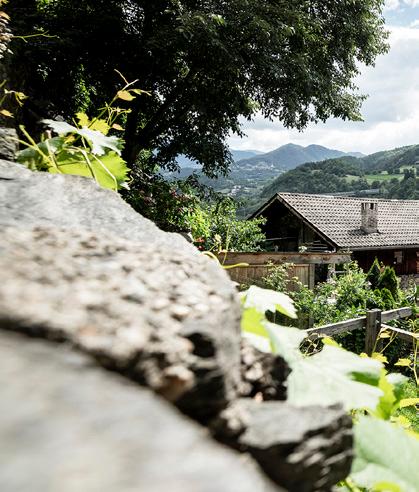
The houses in the upper town are nestled against the rocks on which Säben Abbey sits. Their gardens are accessible via the attic!
With the exception of a few practical compromises to bring it in line with modern requirements, very little has changed. Even the imposing chandelier made from an iron cart wheel still hangs from the ceiling, complete with the decoratively painted cardboard stuck to it. This is a relic from a high-spirited artistic gathering one cheerful (and wine-fuelled) weekend, when Palmié and his friends turned the hall into a romantic wine lounge before the landlord could stop them. Lösch later recounted that poor Kantioler was not amused upon seeing what the painters had done to his inn. However, Lösch reported that the landlord “unwrinkled his forehead” when he noticed that the merry band of painters were taking a childish delight in their work.
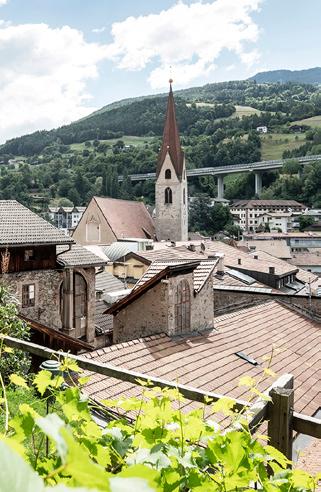
The Lamplsaal was not the only artists’ tavern in Klausen at the end of the 19th and start of the 20th century. Other popular artist haunts included the Gothic wine bar in Mondschein, the Gallmetzer studio on Pfarrplatz square, the Rauterstube (the famous Klausen Batznhäusl inn in Kreuz), the zur Post inn, the Rabensteiner studio and the Köster studio in Griesbruck. While little evidence remains of these former artists’ taverns, in today’s Walthersaal there is a painting commemorating troubadour Walther von der Vogelweide. It is also thanks to him that Klausen found sudden fame in the late 19th century. When Innsbruck-based professor Ignaz Vinzenz v. Zingerle (along with several other researchers) announced that he believed he had found the troubadour’s birthplace at Innervogelweiderhof farm in nearby Lajen-Ried/Laion-Novale, his academic articles and strong personality attracted all manner of artists from Germany and Austria to the Eisacktal valley. They arrived on the newly constructed railway and, on disembarking, discovered a small, sleepy, medieval town that felt in tune with their romantic spirit: Klausen. A place where time seemed to stand still. A place where artists, writers, sculptors and researchers would return every summer and inspire each other’s creativity. A place where, if they grew weary of the idyllic surroundings and tranquillity, all they had to do was catch the next train from the station near the Krone inn and head for the hustle and bustle of city life once more.

Both the art scene and tavern culture flourished in Klausen at the end of the 19th and start of the 20th century when artists like Ernst Lösch and Charles Palmié enjoyed socialising and drinking in the town’s inns.
3 culinary and cultural highlights in Klausen
1 KUNST BODEN_NAH
This contemporary art project describes itself as a “gallery concept that is not tied to any particular place”. International artists are invited to live and work in Klausen as resident artists, where they exhibit their works in empty business premises and public places in return for board and lodging. Three young artists are due to take part in 2020 (exhibition: 7–14 August 2020). www.kunstbodennah.it
2. GASSLBRÄU
Klausen’s old town is home to one of eight brewery taverns found in South Tyrol. Here Norbert Andergassen brews pale, dark and wheat beer in accordance with German purity requirements, as well as creative seasonal craft beer varieties, such as the popular chestnut beer. The tavern also serves excellent food. www.gassl-braeu.it
3. GOLDENE ROSE
In the “Golden Rose”, the town’s oldest inn, patrons can dine just like Klausen’s legendary artist community once did. Dishes from this period, such as tripe and cod hash, are prepared on an old wooden stove. The naturally ventilated, chic stone cellar is an ideal location to enjoy a cigar and some gin. www.goldene-rose.it
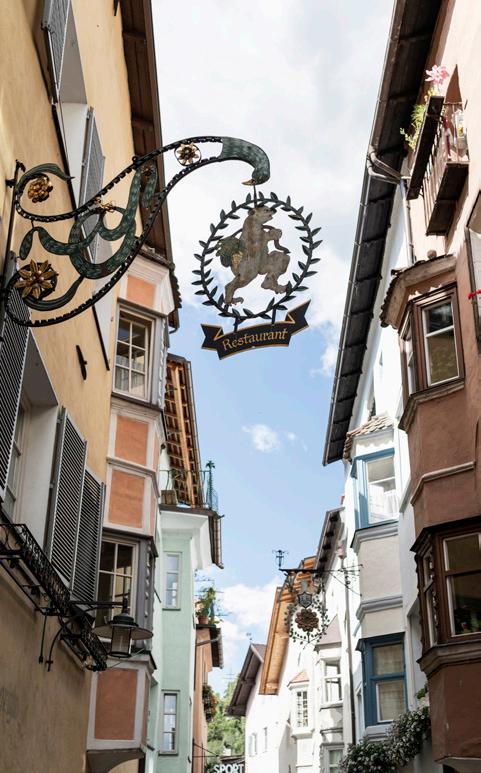
After the First World War, the art colony’s star suddenly faded. In recent years, however, Klausen has been stepping up its efforts to revive its artistic past through special exhibitions at its municipal museum, the Artists in Residence initiative, partnerships with other artist towns and cities and the Kunst boden_nah art project, which creates closer links between artists and the public. Today, a surprising phenomenon is emerging: thanks to Sonya Hofer and Astrid Gamper, Klausen now has a strong female artist scene. Both artists focus on very profound subject matters. Layer by tiny layer, Astrid Gamper covers the female body and partly exposes it again – her intensive creative process of building up and removing layers revealing how women are both vulnerable and strong. Sonya Hofer is currently experimenting with clay and shells as the symbol of the origin of life.
It is now time for us to leave the Lamplsaal and look up at the beautiful old inn sign as we do. Colourful 12 iron inn signs can still be found all over Klausen, even on buildings that have long since ceased to be taverns, such as the Mondschein, Grauer Bär and Weißes Rössl. On the opposite side of the street is the Walther von der Vogelweide inn with its striking crenelated roofline, which was first mentioned as a tavern and bathhouse for wealthy citizens in the Middle Ages. Once called the Löwenwirtshaus, it was renamed after being purchased by the Lamplsaal’s landlord, Kantioler. Its beautiful front façade facing the Eisack river is adorned with a fresco depicting the very same troubadour who gave it its name. The inn was famous for its Mediterranean “Walther” garden, which extended all the way to the Eisack and became a relaxing place for artists to meet. Today, the “Vogelweide”, as Klausen residents affectionately call it, is known for its spectacular terrace. Its young manager, Simon Rabensteiner, is also in the final stages of converting the rooms into a small art hotel.
Walking southwards down the long, narrow cobbled street through the upper town, we reach a green building on our left, which at just under three metres wide is the narrowest house in Klausen. Its 100 square metres of living space are spread across five storeys and it also features a stone cellar. If you walk down to the Eisack river via the nearby Tränkgasse lane, you can see the small garden belonging to the house – a gravelly, rectangular patch with an old pear tree that provides shade in summer.

Located in the former Capuchin monastery with its peaceful inner courtyard, Klausen’s Stadtmuseum or municipal museum holds temporary exhibitions that are inspired by the town’s past as an artists’ colony.
All the houses in the upper town have gardens. In the houses facing the Eisack the garden is accessible via the cellar, while in those facing Säben mountain, it is accessible via the attic! The houses in Klausen’s old town are built on an incline. They seem to be pressing themselves against the rocky Säben moun- tainside as if they are trying to protect themselves from the Eisack river, which puts them at regular risk of flooding. The town’s Italian citizens have coined the expression “the secret gardens of Klausen” to describe the gardens facing Säben mountain be- cause although hardly visible, they offer magnificent views.
Let’s return now to the narrow street through the old town, which throughout history 66 German kings and emperors as well as countless merchants and pilgrims have travelled along on their journey south. Balconies were prohibited along this bottleneck, along which everyone who ventured over the Bren- ner pass by carriage had to trundle. To make up for this, each house has bay windows to let in light and to allow occupants to look out at (or, in some cases, monitor) the entire street. The houses in the upper and lower town are painted in a beautiful array of colours, creating a gentle sea of pastel tones, which are stipulated by a municipal colour committee. Any home owners wishing to carry out alterations are subject to very strict conditions. Almost all the houses in the old town have nevertheless been lovingly refurbished and together create a beautiful picture. They are so close together that in 1867 a German travel reporter wrote that a tall barber with “particularly long arms” could easily shave the beard of the person living opposite by reaching through the windows. Today, this close proximity is used to bring the place to life by hanging colourful decorations, such as umbrellas or flags, on a rope that criss-crosses the street. Back on ground level, small, enticing shops offer a warm welcome and personal service from friendly owners who love to chat to passers-by. The black door on the magnificently whitewashed house in the middle of the upper town is particularly remarkable, as it owes its deep black colour to the stain added by the owners for protective purposes. Two coats of arms on the door indicate how this building once belonged to the bishop, before being given to the town to serve as the town hall and school house. The key tilted to the left in Klausen’s coat of arms symbolises that the town’s gates open for those who have paid their tolls, but remain closed to those who have not. With a lamb and cross in its flag, the other coat of arms represents the bishop of Brixen, to whom Klausen was directly subject until secularisation in 1803. This is also strikingly portrayed by the colourful frescoes with the bishop’s coats of arms on the toll house near the Brixner Tor gate.
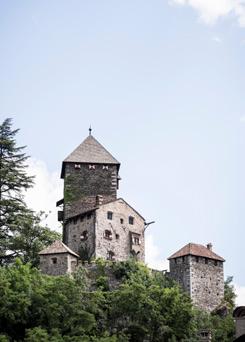
The buildings in the upper town are steeped in history. Examples include the town hall connected to the Church of the Apostles; the school, which was converted from three former houses in 1912; the Neustift’sche Haus, which served as the zum Schlüssel inn in around 1900; the Altlöwenhaus with its painted coats of arms and arched doors; the Frühmesnerhaus, which has recently been renovated by the Rabensteiner family; the old courthouse, which once belonged to the nobles from Villanders/Villandro; and the Brunnerhaus with its elaborate wooden front door. They all have exciting stories to tell. However, the upper town is about much more than its past. Alongside shopkeepers and restaurateurs, craftspeople still continue their traditional trades here – from Gretl Mair the goldsmith and Nora Delmonego the young shoemaker to Hermann Plieger the decorative metalworker. Taking a stroll through Klausen’s old town means following in the footsteps of the members of the artists’ colony who fell in love with the enchanting allure of its medieval buildings and its charming people at first sight.

Balconies were prohibited on the narrow street through Klausen’s old town which every carriage once had to pass along on its way through the valley. To make up for this, each of the pastel-coloured houses has bay windows to let in light and give its occupants a good view of the street.
Two Artists Astrid Gamper and Sonya Hofer on their town
“We love the tranquillity, nature and culture in Klausen. Thanks to modern means of communication, we as artists feel connected to the entire world even from a town as small as this.”
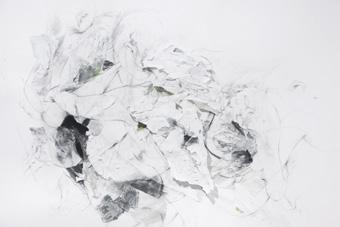
Astrid Gamper
Born in 1971, Astrid Gamper studied graphic and fash- ion design and has been working in her studio in Klaus- en since 2000. Most recent exhibition: “Unter die Haut” (“Under Your Skin”, Stadtmuseum Klausen). www.astridgamper.com
“One of our favourite cultural highlights in Klausen is the Stadtmuseum. This municipal museum organises five special exhibitions a year, showcasing a wide range of contemporary art.”

Today, women have a strong influence on Klaus- en’s art scene. Pictured: Sonya Hofer’s 2018 portrait of the abbess of Säben Ab- bey, Marcellina Pustet, as well as a piece from Astrid Gamper’s 2018 series “Hül- len” (“Layers”), in which she attempts to portray women as both vulnerable and strong.
Born in 1948, Sonya Hofer lives and works in Klaus- en as a freelance artist, portrait painter and art educator. Most recent exhibition: “Schalen” (“Shells”, 50x50x50 ART Südtirol, Franzensfeste fortress). www.sonyahofer.it
The pair launched the “ars sacra – Kunst und Kirche im Heute” (“ars sacra – Art and the Church Today”) project in Klausen in 2018.
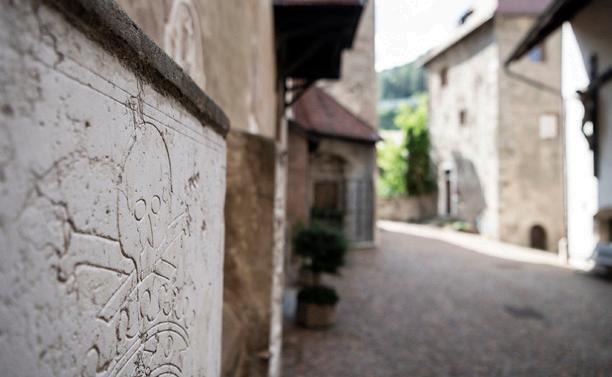
THE AUTHOR: Born in 1955, Maria Gall Prader studied educational sciences and German as a foreign language, before completing a research doctorate in general education, didactics and social pedagogy. She works as a lecturer, research fellow, tour guide and writer. Her most recent publication is Klausen gestern und heit – 30 bsundere Leit (“Klausen Yesterday and Today – 30 Characters”), published by Athesia.










